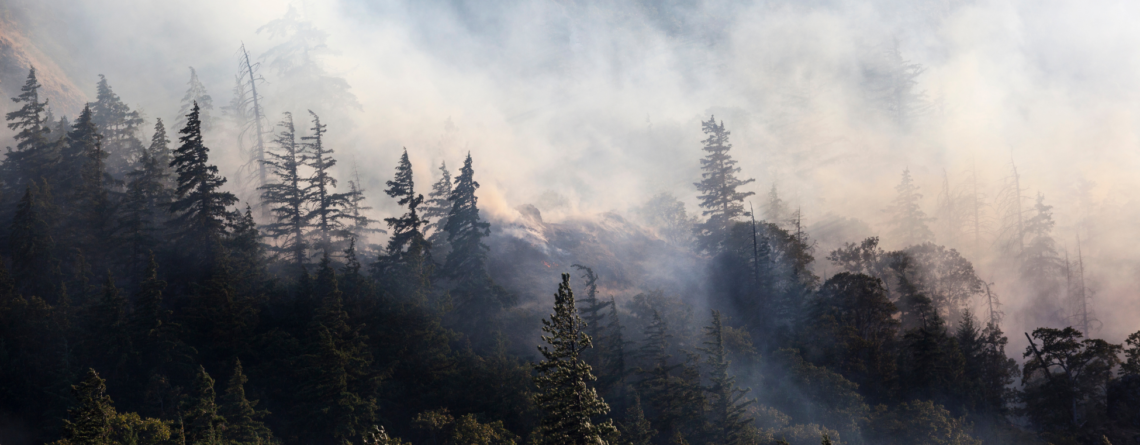Hardening Your Home Against Wildfire
Spring rains help us reduce the drought—which is good. But they also make it possible for lots of vegetation to grow—which can become fuel for wildfires. Have you hardened your home against wildfire?
In the face of a raging fire, there’s nothing any of us can do but evacuate; however, by following the California Fire Safe Council’s recommendations, we can lessen the chances of our homes going up in flames.
The three primary ways wildfires spread are via ember storms, radiant heat, and direct flame. Embers are bits of burning debris that can be caught by the wind and carried more than a mile away. If embers land on combustible material such as decking, fencing, or a pile of dry leaves—or get caught in wooden siding or under eaves—they can ignite. Big fires create their own wind, sometimes intense enough to blow heavier material such as burning asphalt shingles, as happened during the Coffey Park fire a few years back.
Radiant heat also poses a threat. Think about how hot it gets when you’re too close to a campfire, so hot your skin can burn without actually touching the flame. Now multiply that intensity by a whole house on fire. Radiant heat can ignite the house next door without any contact by embers or direct flame. Most everything has a kindling point. Redwood shingles have a lower kindling point; concrete has a higher kindling point.
And of course, fire spreads through direct flame, sometimes using what firefighters call the fire ladder: grasses ignite bushes which then ignite low tree branches and up the ladder it goes.
So, what can you do to make your home as safe as possible in this fire-prone area? Actually, quite a bit.
Maintaining a defensible space around your house is not only advisable; it’s the law. When possible, minimize any flammable material within 100 feet of your home. Obviously, if you live in a subdivision like Oak Manor, Empire Gardens, or other neighborhoods where houses are close together, this isn’t realistic. However, it does highlight the interdependence of fire safety. If your neighbors’ property has untrimmed trees and piles of dry leaves all over the place, everyone nearby is at risk.
According to the Fire Safe Council, everyone should keep combustible material of any kind at least five feet away from their homes. This includes not only landscaping, but patio furniture, stacked firewood, and especially any extra gas and oil for your weed whacker.
If you have a lawn, mow it down to four inches or shorter. If you have trees, trim branches at least ten feet off the ground and remove any limbs hanging over your house. If you use bark as mulch, keep it away from the house and work the mulch into the soil as much as possible. At this point, maybe we should all just use decorative rock as ground cover. It’s certainly safer.
As you think about fire safety, it’s important to consider your evacuation, starting with questions like: Do you know how to open your garage door or automatic gate if the power is out? And if your quarter-mile long driveway is burning on both sides, your tires will melt before you can drive to safety. Trim vegetation away at least ten feet.
In addition to landscaping, you can harden your home by emptying gutters, clearing roofs, and sealing cracks in your siding and eaves. Make sure there’s a mesh screen over your chimney so embers cannot go in or out and consider investing in a self-closing dryer vent. As a former Boy Scout, I can tell you, lint makes great kindling. I used to bring it on camping trips with a little flint and steel, and voila, campfire started.
If you are building a new house (or if you have the funds to replace all your windows), consider dual-paned with tempered glass because they’re more heat resistant, making your windows less likely to break in the event of a fire. No matter how well you’ve protected the outside of your home, as soon as a window breaks, all the combustible material inside your home provides fuel for the fire. You might also consider decking material such as Epay, a concrete-like substance that is less flammable than wood.
Finally, be sure firefighters can find your house–reflective, fire-resistant placards make it easy to see your address from the street. And remember, firefighters generally put their energy where it does the most good. They’ll look for the fire-hardened homes first.
If you have questions about property management or real estate, please contact me at rselzer@selzerrealty.com or call (707) 462-4000. If you have an idea for a future column, share it with me and if I use it, I’ll send you a $25 gift certificate to Schat’s Bakery.
Dick Selzer is a real estate broker who has been in the business for more than 45 years.






